Arctic Wildfires: Smoke from Siberian blazes causes smoke cloud as big as the EU!
- Published
- comments
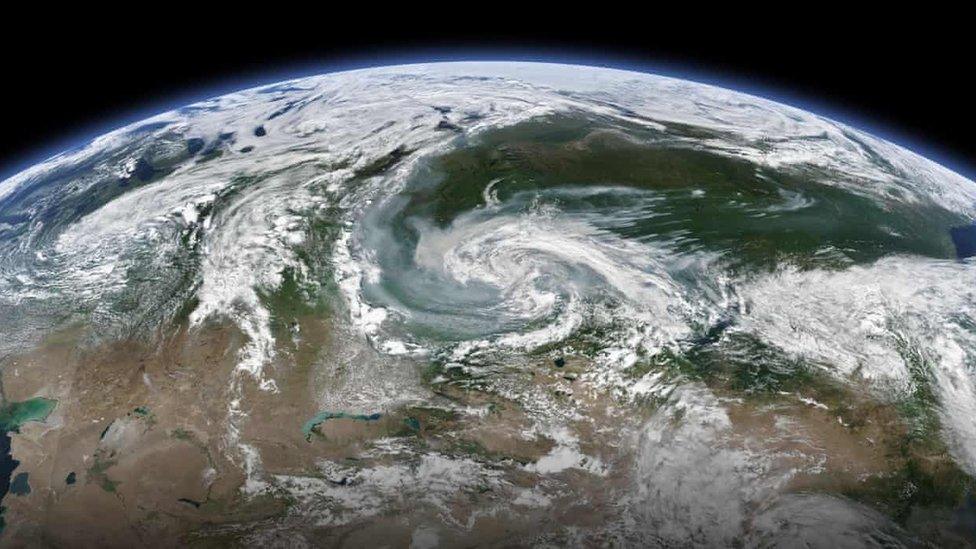
A satellite photo of the smoke cloud over Russia
Scientists say a cloud of smoke and soot as large as the European Union is looming over Siberia, which is a large region in Russia.
It has been caused by wildfires in the Arctic Circle and is thought to be affecting over five million square kilometres of land.
Why is this happening?
Large parts of Siberia have been devastated by the fires - huge area of forest has been destroyed - over 4.3 million hectares.
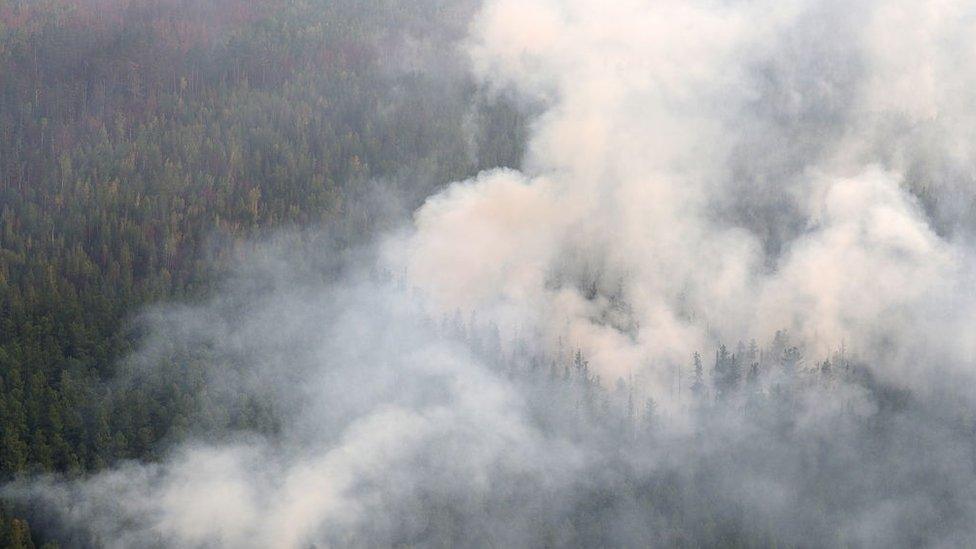
It is causing massive amounts of carbon dioxide to be spewed into the atmosphere, warming the air, drying out the land and therefore making the situation even worse.
This soot can be harmful to humans and animals, entering the lungs and bloodstream.
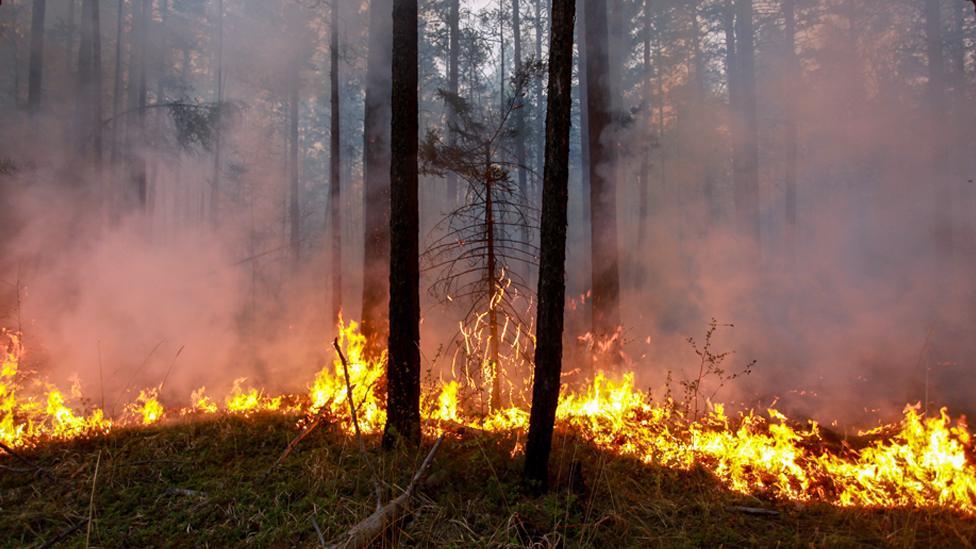
It could also play a role in global warming. Nasa scientists say the soot absorbs sunlight and warms the atmosphere.
If it falls on ice or snow, it reduces reflectivity and can trap more heat, speeding up the melting process.
The United Nations weather experts, the World Meteorological Organization, says that the cloud is now as big as 5 million square kilometres and could soon stretch as far as Greenland - the countries of the European Union span 4.5 million square kilometres.

What's being done about it?
Smog has led to several regions announcing a pollution emergency and smoke has blown across major Russian cities, blotting out the sun and making it difficult for some people to breathe.
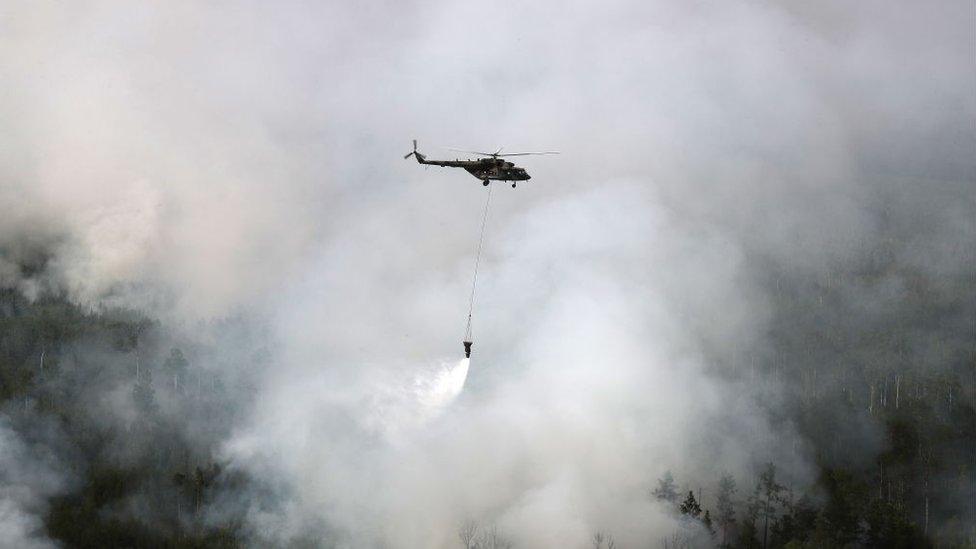
The huge fires in northern Russia, Alaska, Greenland and Canada have now been going for over two months.
In July, the Russian president, Vladimir Putin, brought ordered the army to fight the blazes and four Siberian regions declared a state of emergency.
Around the world, June and July were the hottest months ever measured, with experts saying the temperatures contributing to the spread of the fires.
- Published3 August 2018
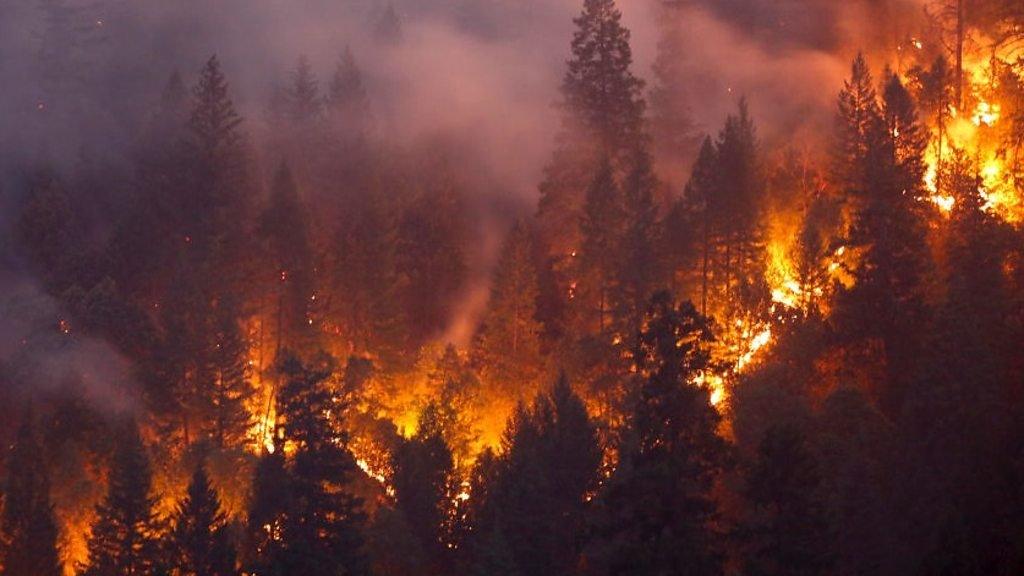
- Published9 August 2023
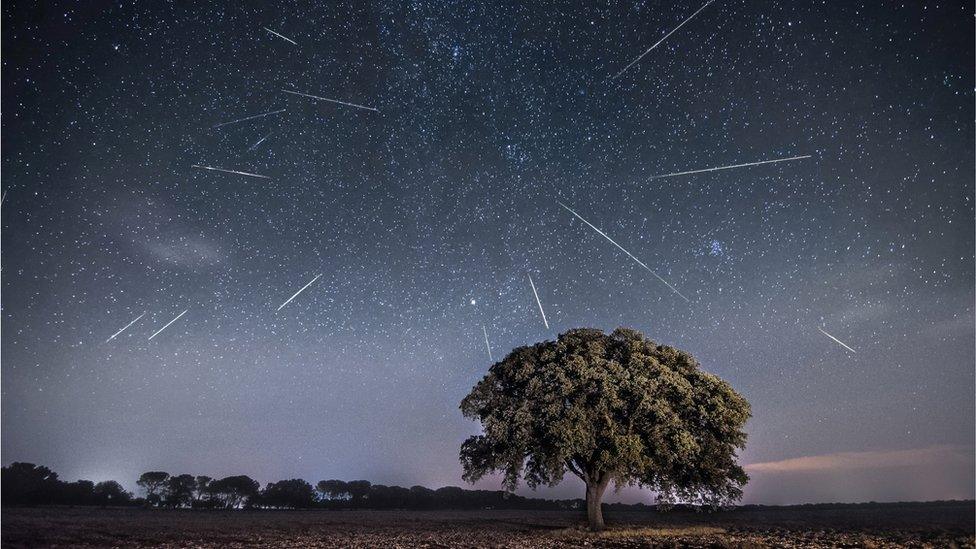
- Published12 August 2019

